The Professional Writing Committee examines available textbooks for each of the three courses every two or three years to select a limited number for use in these courses. These limited lists of approved texts help provide some consistency in approach and coverage from section to section of the courses and serve as a quality check on the large number of diverse texts that are available.
The texts on the approved lists have been selected because they are compatible with our Course Goals. They also provide some diversity in pedagogical methods for meeting those goals, to accommodate teachers with different styles and preferences.
Teachers of 331, 332, and 333 should use one of the texts on the approved list. However, it is also helpful to have teachers try out promising new books as they are published. If you wish to use a book that is not on this list, please consult with the Director of Professional Writing about the book and your plans for testing it out. When you do field-test an alternate text, the Professional Writing Committee will request a report to use in considering subsequent revisions to the textbook list.
Copies of the approved textbooks and instructor’s manuals are available for examination in the Resource Library in Tompkins131-B; the program assistant in that office can help you get your own desk copies.
Remember, it is important to list information about your textbooks, including price, on the syllabus.
- Approved Textbooks-ENG331
- Approved Textbooks-ENG332
- Approved Textbooks-ENG333
- Possible Supplements
- Textbook Orders
Approved Textbooks: ENG 331 (March 2021)
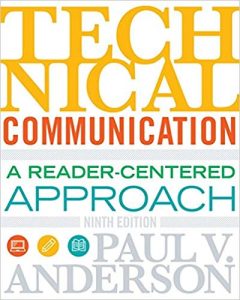 | Anderson, Paul V. Technical Communication: A Reader-Centered Approach. 9th ed., Cengage Learning, 2018. Publisher Website Strong reader-centered approach includes practical attention to workplace contexts; instruction organized around guidelines and then applied to basic genres. Coverage of ethics, collaboration, international communication, computers, graphics. Includes discussion of computer and internet communication, website and screen design, and collaborative writing; annotated sample documents. Free web resources for instructors and students at the address above. |
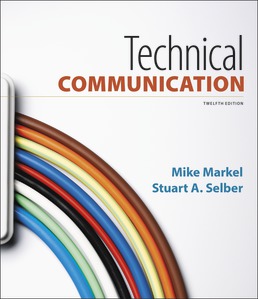 | Markel, Mike, and Stuart A. Selber. Technical Communication. 12th ed., Macmillian Learning, 2018. Publisher Website The author covers the main issues that a teacher would need to cover: writing for your audience, preparing visuals, writing help, grammar guidelines, documentation guidelines, and typical project guidelines and samples. The sections on preparing visuals, grammar, documentation, and ESL help are strong. They are concise and hit the high spots writing teachers see most often. The other major strength is that it really seems to be a one-stop shop for everything a writing teacher would need. It has sample work to review, exercises for class (if you’re teaching face to face or hybrid), and interesting tutorials. Supplementation could be useful, but might not be necessary with this book.Overall Recommendation: This text would be very useful for new teachers starting out with technical communication classes, or for teachers who only want to use one book. |
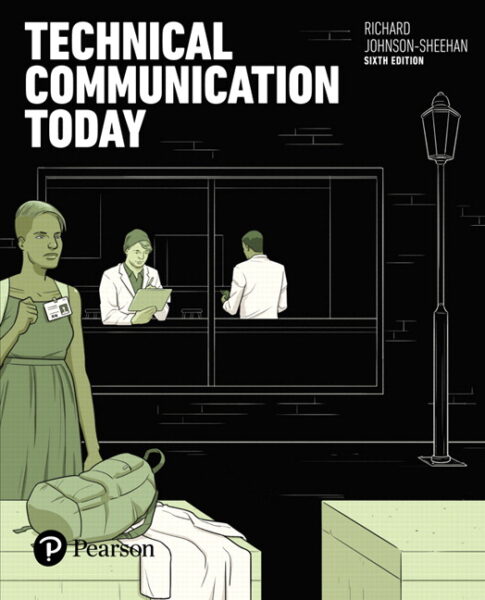 | Johnson-Sheehan, Richard. Technical Communication Today. 6th ed., Pearson, 2018. Publisher Website Firmly rooted in core rhetorical principles, Technical Communication Today presents computers as thinking tools that powerfully influence how we develop, produce, design, and deliver technical documents and presentations. This popular text helps communicators draft and design documents, prepare material for print and web publication, and make oral presentations. -- Overview by Pearson |
Updated March 2021
Approved Textbooks: ENG 332
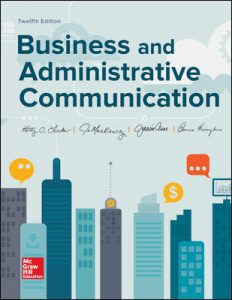 | Locker, Kitty, and Donna Kienzler. Business and Administrative Communication. 12th ed. McGraw Hill, 2019. Publisher Website Thorough coverage of standard topics. Lots of teaching apparatus (examples, exercises, cases, transparencies, etc.) that actually works in class; good coverage of language issues relevant to gender, ethnicity, disability. Scenarios and quotations from business situations add realism. Good for new instructors. (Review by Carolyn Miller) |
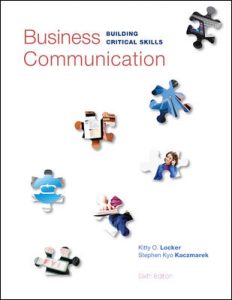 | Locker, Kitty, and Steve Kaczmarek. Business Communication: Building Critical Skills. 6th, ed., McGraw Hill, 2014. Publisher Website A new textbook by the author of the popular Business and Administrative Communication, which is still on our list for those who prefer it. The Professional Writing Committee thought that this new book would be more flexible and easier to use, while retaining the audience-focused approach of the older book. Many supplements available: CD-Rom, website, videos, PowerPoint demonstrations. See the websites for details. (Review by Carolyn Miller) |
 | Bovee, Courtland L, and John Thill. Business Communication Today. 12th, ed., Pearson, 2014. Publisher Website The field’s leading text for more than two decades, Business Communication Today continues to provide the cutting-edge coverage that students can count on to prepare them for real business practice. This edition includes up-to-date coverage of the social communication model that’s redefining business communication and reshaping the relationships between companies and their stakeholders. -- Review by Pearson |
Updated March 2021
Approved Textbooks: ENG 333
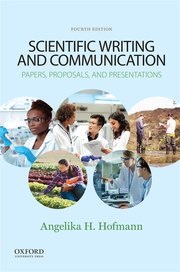 | Hofman, Angelika. Scientific Writing and Communication: Papers, Proposals, and Presentations. 4th, ed., Oxford University Press, 2019. Publisher Website “It is an excellent book with tons of good examples and exercises. The content is well suited for an undergraduate audience. The only shortcomings are in the lack of material on writing for general audiences and in the minimal attention to plagiarism/ethics […] I would recommend the book for new teachers because of the clarity with which it is written and the many helpful exercises on scientific style, writing research reports and other documents, etc. It is short on substantial examples of the longer professional documents (and it doesn’t have casebooks), but it does include the examples of important sections of these documents” (Review by Daun Daemon) |
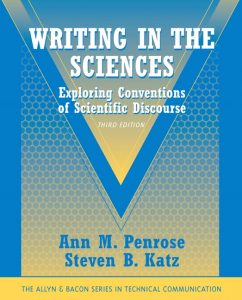 | Penrose, Ann M., and Steven B. Katz.Writing in the Sciences: Exploring Conventions of Scientific Discourse. 3rd, ed., Pearson, 2010. Publisher Website Explains science as a social enterprise, with ethical implications. Instruction in major genres (research reports, conference papers and posters, proposals, public communication) is based on comparative discourse features. Involves students in discovering the specific discourse conventions and expectations of their own disciplines. Includes four sample research cases in physical, biological, and geological-interdisciplinary sciences. New chapter covers procedure writing in laboratory and QA contexts. (Review by Carolyn Miller.) |
Updated March 2021
Possible Supplements
Some teachers find these book useful as substitutes or supplements for a comprehensive textbook.
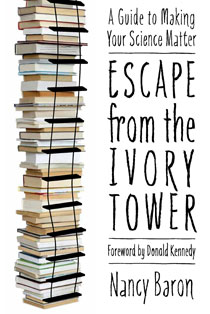 | Baron, Nancy.A Guide to Make Your Science Matter: Escape from the Ivory Tower.IslandPress, 2010. Publisher Website In this practical and entertaining guide to communicating science, Baron explains how to engage your audience and explain why a particular finding matters. She explores how to ace your interview, promote a paper, enter the political fray, and use new media to connect with your audience. -- Review by Island Press |
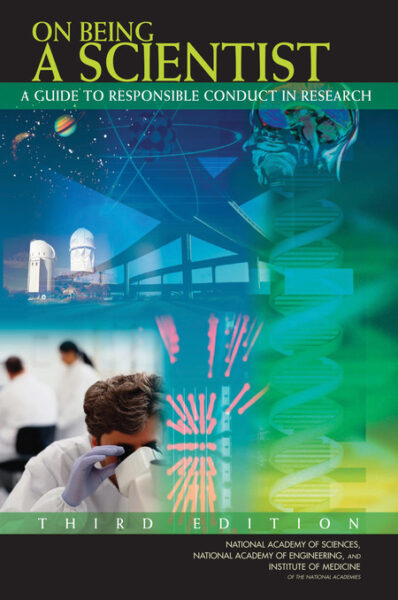 | National Academy of Sciences, National Academy of Engineering, and Institute of Medicine. 2009. On Being a Scientist: A Guide to Responsible Conduct in Research: Third Edition. Washington, DC: The National Academies Press. https://doi.org/10.17226/12192. Publisher Website On Being a Scientist was designed to supplement the informal lessons in ethics provided by research supervisors and mentors. The book describes the ethical foundations of scientific practices and some of the personal and professional issues that researchers encounter in their work. It applies to all forms of research--whether in academic, industrial, or governmental settings-and to all scientific disciplines. -- Review by The National Academies Press |
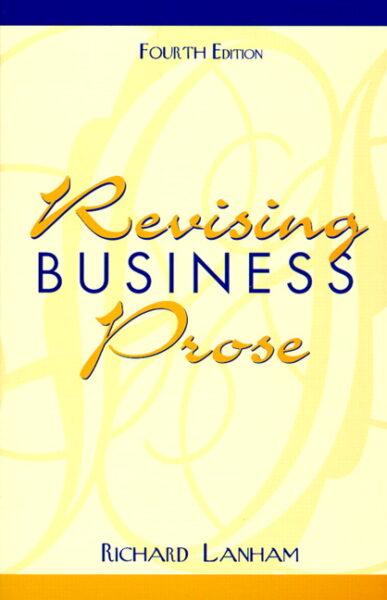 | Lanham, Richard A. Revising Business Prose. 4th, ed., Pearson, 2000. Publisher Website Revising Business Prose provides detailed revision guidance and a collaborative approach to writing easily applied to writing in business, industry, government, and academics. Based on the premise that bad writing in organizations imitates the bureaucratic style — “The Official Style,” as it's called here — this book shows students how to transform stilted, dense prose into plain English. -- Review by Pearson |
 | Alred, Gerald J., et al.Handbook of Technical Writing. 12th, ed., Macmillan Learning, 2019. Publisher Website A reference manual with over 500 alphabetical entries plus topical key, index, and writer's checklist. Includes models of reports, proposals, correspondence, visuals etc. New edition features expanded coverage of workplace technology, electronic texts, and online research, For experienced instructors who can supply their own course design, exercises, and instruction. Also available in a shorter edition that might be more appropriate as a supplementary text, The Technical Writer's Companion, 2nd ed (1999). (Review by Carolyn Miller) |
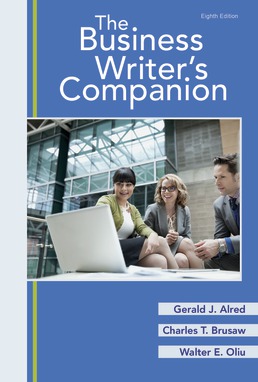 | Alred, Gerald J., et al. The Business Writer's Companion. 8th, ed., Macmillan Learning, 2017. Publisher Website The Business Writer's Companion is the best guide to the business writing essentials that help students land, navigate, and stand out on the job. The eighth edition retains the book's intuitive, easy-to-use organization while adding new coverage of social media, and LaunchPad Solo for Professional Writing takes advantage of what the Web can do with useful digital tips and sample documents. -- Review by Macmillan Learning |
Updated March 2021
Textbook Orders
Each semester, you will receive a personalized ordering link from the NCSU bookstore. Textbook orders are usually needed by March 15 for summer sessions, April 5 for fall, and October 15 for spring semester. If you cannot meet these deadlines or wish to change an order, you should contact the NCSU Bookstore.
You will need the following information when ordering or changing an order: course and section numbers, titles and authors, ISBNs, whether cloth or paper is acceptable, whether the text is required or options, and anticipated course enrollment.
